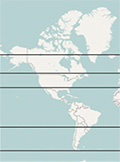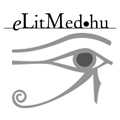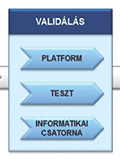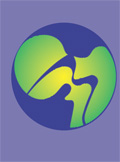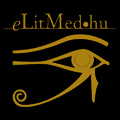The eLitMed.hu medical portal uses computer cookies for convenient operation. Detailed information can be found in the Cookie-policy.
LAM KID - 2014;4(04)
Content
[The impact of vitamin D in infertility and the role in pregnancy and in nursing period]
[Various medical associations issue different recommendations for the prevention and treatment of vitamin D deficiency. These significant differences are partly explained by the different definition of normal vitamin D level and the use of completely different mathematical models to predict the increase in vitamin D level as a response to therapy. According to the Institute of Medicine, the target vitamin D level is 20 ng/ml, whereas the Endocrine Society recommends 30 ng/m as the minimum target value. These differences show that the two Society have different views on the risk of adverse effects. Screening, however, is not recommended by either society. In this review I summarize the role of the vitamin D supplementation in the prevention of infertility. Also, I suggest the protective effect of the vitamin D during the pregnancy. In my opinion screening program against D hypovitaminosis should be performed in case of infertility and in pregnancy, because data show a protective role of vitamin D against many disease of newborn. ]
[Bone metabolism and the 10-year probability of hip fracture and a major osteoporotic fracture using the country specific FRAX algorithm in men with type 2 diabetes mellitus]
[Objectives: Was to evaluate 10-year probability of hip fracture and a major osteoporotic fracture using the FRAX algorithm, vitamin D status, bone mineral density (BMD) and biochemical markers of bone turnover in men over 50 years of age with type 2 diabetes (T2DM). We compared FRAX-predicted 10-year fracture probability, levels of 25-hydroxyvitamin D (25-OH-D), markers of bone turnover and bone mineral density at L1-L4 (LS) and femur neck (FN) in 68 men with T2DM with an age- and gender-matched group (n=68). The mean (range) age of the T2DM group was 61.4 (51-78) years. The prevalence of hypovitaminosis D (25-OH-D <75 nmol/L) was 59%. The mean (range) FRAX hip fracture and FRAX major osteoporotic fracture was 0.7 (0-2.8)% and 3.2 (0-8.5)%, respectively. BMD at the FN (0.974 gm/cm2 vs. 0.915 gm/cm2; p = 0.008) and LS (1.221 gm/cm2 vs. 1.068 gm/cm2; p < 0.001) was significantly higher in the T2DM cohort as compared to the healthy age matched males. 25-OH-vitamin D (67.7 nmol/L vs.79.8 nmol/L; p < 0.001), crosslaps (0.19 μg/L vs. 0.24 μg/L; p = 0.004) and osteocalcin (13.3 μg/L vs. 15.7 μg/L; p = 0.004) were significantly lower in the T2DM group. There was no difference in FRAX-related fracture probability between the two groups. The increased BMD in T2DM and the lack of inclusion of T2DM as a risk factor in the FRAX algorithm are probable explanations for the discordance between literature-observed and FRAX-related fracture probabilities.]
[Comparison of different schemes of vitamin D3 therapy]
[Vitamin D plays an important role in several pathways in humans. Its relation with several diseases has been previously described. Vitamin D deficiency affects almost the full population on temperate zone at the end of the winter. Recommendations on vitamin D supplementation are inconsistent and there are only a few data about the efficacy of cholecalcipherol given not in daily manner. In the present paper, we examine the different administration modalities, and their efficacy in increasing serum vitamin D levels. High doses administered rarely appear to be equally efficient and safe compared to low doses provided frequently.]
[Experiences from the dissection room. Quantitative and qualitative study among Hungarian medical students]
[BACKGROUND - The anatomy and pathology are the most outstanding field of the medical curriculum. These subjects mean the first practical experiences of dissection. The international literatures results shows that experience of dissection are important stages of becoming physician, but not always problemless. METHODS - Quantative (n=733) and qualitative (n=45) exploratory research among Hungarian medical students. We tried to present the effects and experiences of dissection pratcise using both analytical methods. Validity of the research was greatly improved by using the two methods. RESULTS - 50% of medical students reported that they were affected by dissection practice. The female students and those in clinical training (III-VI.years) reported about negative effects significantly more frequently. The results of the qualitative survey verified that dissection practices have decisive effect during the training and coping with experiences was often difficult especially for females students. CONCLUSIONS - Our research confirmed the hypothesis of dissection experiences play outstanding role in becoming physician. The successful coping isn’t the repression or ignorance of emotion, but understanding and finding effective solutions strategies for the negative emotions of experiences. Managing these experiences are a crucial factor of latter wellbeing of physicians and decisive factor of doctors-patient relationship.]
1.
Clinical Neuroscience
[Headache registry in Szeged: Experiences regarding to migraine patients]2.
Clinical Neuroscience
[The new target population of stroke awareness campaign: Kindergarten students ]3.
Clinical Neuroscience
Is there any difference in mortality rates of atrial fibrillation detected before or after ischemic stroke?4.
Clinical Neuroscience
Factors influencing the level of stigma in Parkinson’s disease in western Turkey5.
Clinical Neuroscience
[The effects of demographic and clinical factors on the severity of poststroke aphasia]1.
2.
3.
4.
5.
